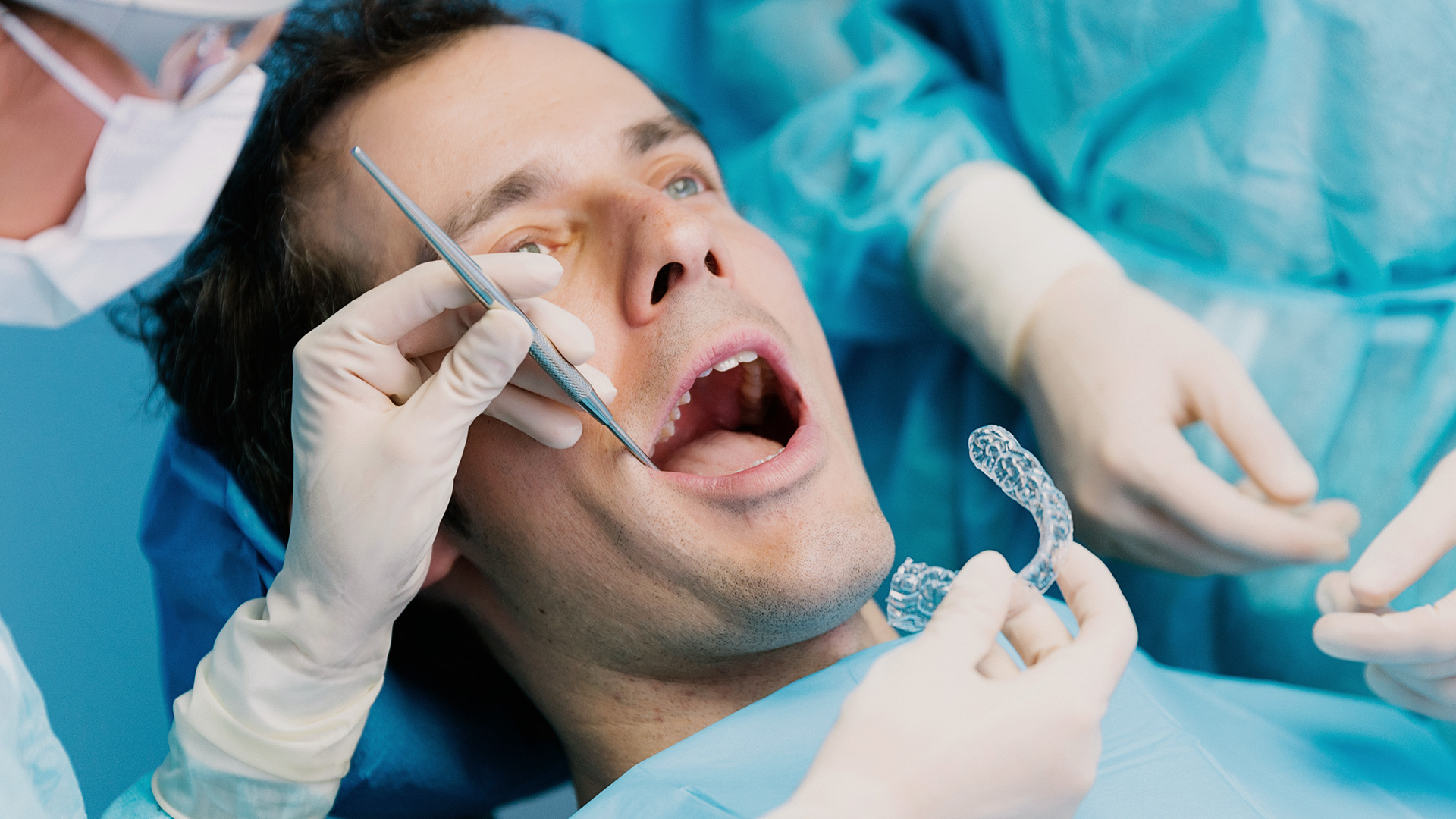Tooth Extraction Dental Care

If you have problems with your tooth or gums, such as decay, periodontal disease, or an abscessed tooth, you may need to get a tooth removed.
Tooth extractions allow our dental team to create sufficient space for orthodontic treatment such as with Invisalign clear aligners, or to remove a tooth due to irreparable decay or gum disease. Our dental team will discuss any potential alternatives first before recommending a tooth be removed.
People typically only have two sets of teeth in their lives: milk teeth and permanent teeth. Milk teeth are the first set of when we are young. When the milk teeth fall out, the second set of permanent teeth take root. However, poor oral health habits sometimes leads to:
- Irreversible tooth decay damage occurs when dental caries reach the pulp, which is located in the core of the tooth. Bacteria degrades a tooth’s enamel and can infiltrate the pulp to cause an infection. A root canal treatment may be possible. However, a tooth extraction may be necessary if the tooth decay has spread too far.
- Periodontal disease or gum disease is a multi-factor condition caused by inflammation that can lead to gum recession. It is usually related to dental plaque build-up. Gum recession causes teeth to become more susceptible to decay and advanced periodontal disease. The condition is typically easily addressed with proper oral hygiene like brushing and routine visits to the dentist. When left untreated, gum disease can cause bone degradation around the teeth leading to tooth loss.
- Impacted teeth are, essentially, those that are blocked from erupting out of the gums. Wisdom teeth are a great example of teeth that can be impacted. Our dental surgeons may recommend that an impacted tooth be extracted to reduce the risk of infection and overcrowding.
- When teeth are overcrowded there’s not enough room for them to shift in order to realign your teeth. When this is the case, a tooth extraction may be a good option before orthodontic treatment to restore proper alignment.
- Accidents happen like a cracked tooth from playing sports or simply a misdirected elbow to the mouth. When a patient comes to us after one of these unfortunate events, our first priority is always to try save the tooth. It’s possible that all that is needed is a dental bond, crown, bridge or veneer. But in severe cases, a full tooth extraction may be necessary.
Tooth Extraction Process at Our Dental Clinic in Singapore
A tooth extraction is usually a last-resort procedure because a tooth can no longer be restored, is too mobile, or is pulled in preparation for orthodontic treatment.
The procedure is usually performed under local anaesthetic. Our dental clinic always applies a surface numbing gel before giving the local anaesthetic injection to ensure the procedure is as pain-free as humanly possible. If you have any concerns regarding analgesia, feel free to openly discuss your reservations with our dentist.
Once the area around the extraction site is numb, our dentist will light apply pressure to the tooth from various sides to loosen it slowly. When the tooth is quite loose within its socket, forceps are used to gently remove the tooth. In most cases, we’re able to extract the whole tooth intact. In cases where the tooth is extremely decayed, it may come out as separate pieces. Once the entire tooth is completely removed, the extraction site is checked for any debris and cleaned. We’ll then place a pack to stop the bleeding.
Following the tooth extraction procedure, we’ll give you detailed instructions on how to take care of the extraction site to optimise healing. Frequently, we will prescribed mouthwash and painkillers.
Tooth Extraction Price in Singapore
We hope this information about tooth extractions has helped you better understand what to expect when it comes time for your appointment.
We always encourage you to meet with our dentist for a consultation to discuss your individual needs and treatment costs for a tooth extraction. The cost of a tooth extraction treatment will depend on many factors. The fee range for a non-surgical extraction is $85.60-$160.50. Wisdom tooth extraction costs can be found in our oral surgery section.
You may be able to use MediSave account for certain surgical procedures such as a surgical extraction of a wisdom tooth removal or a fractured tooth. Remember, if you have any questions or concerns in the meantime, don’t hesitate to contact our general dental clinic in Singapore.
Make An Appointment →
General Dentistry Services
Dental Examinations
This is a critical part of the dental appointment. At your first visit, and at subsequent check-ups, the dentist will carry out a thorough check of not just your oral health, but also the health of the peri-oral tissues.
Dental Fillings
Fillings are placed to restore teeth to function and appearance after trauma, caries removal or tooth wear. Fillings can be separated into two categories – silver coloured or tooth coloured. However we no longer place silver coloured fillings at our clinic.
Periodontal Treatment
Also known as non-surgical periodontal treatment or gum treatment, this is the treatment for people with periodontal or gum disease. When you attend your regular check-up, our dentist will always check your gum health.
Regular Maintenance
This is the regular maintenance treatment that is normally sufficient for most people to maintain oral health. In addition to the dental check-up it involves scaling & polishing, fluoride treatment, and sometimes special tests depending on your specific needs.
Root Canal Treatments
When the nerve of a tooth dies, or becomes infected, you may experience pain and swelling. This can cause a severe toothache in extreme cases. Root canal treatment allows us to remove the infected or necrotic nerve while saving the tooth.
Tooth Extractions
Extraction is the treatment to take a tooth out under local anaesthetic. It is usually done because a tooth can no longer be restored, is too mobile, or for orthodontic treatment.
